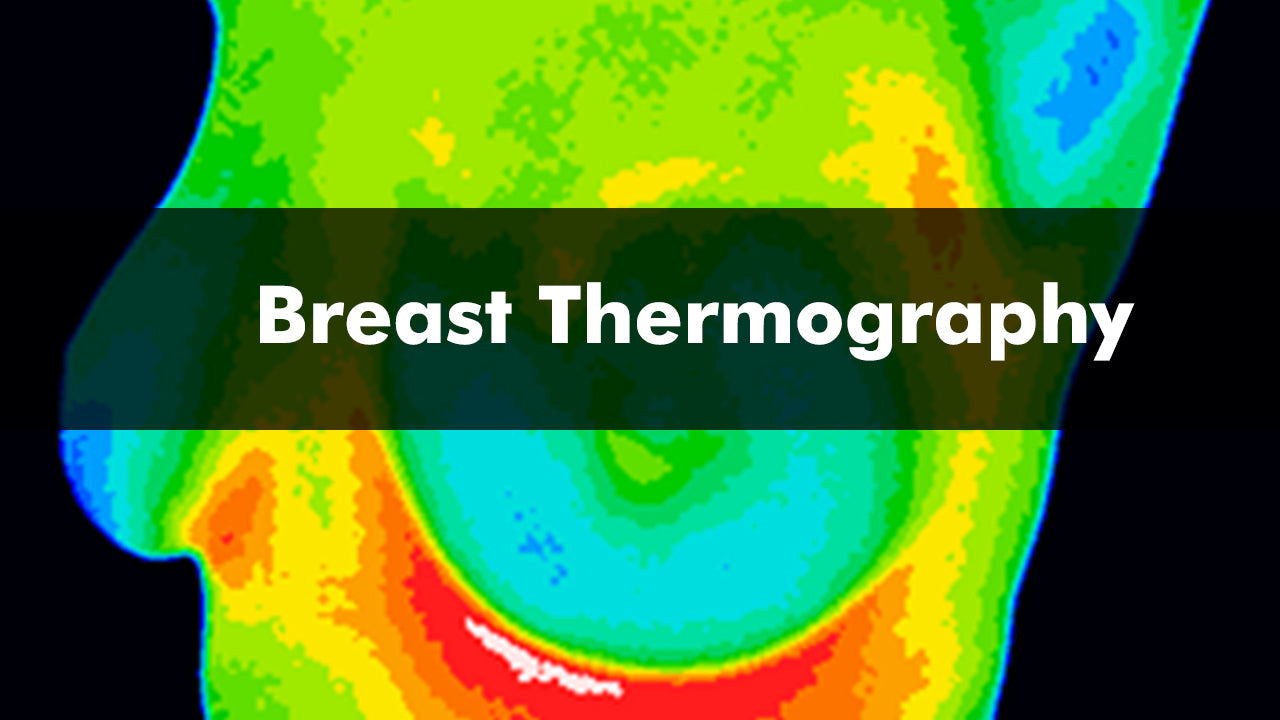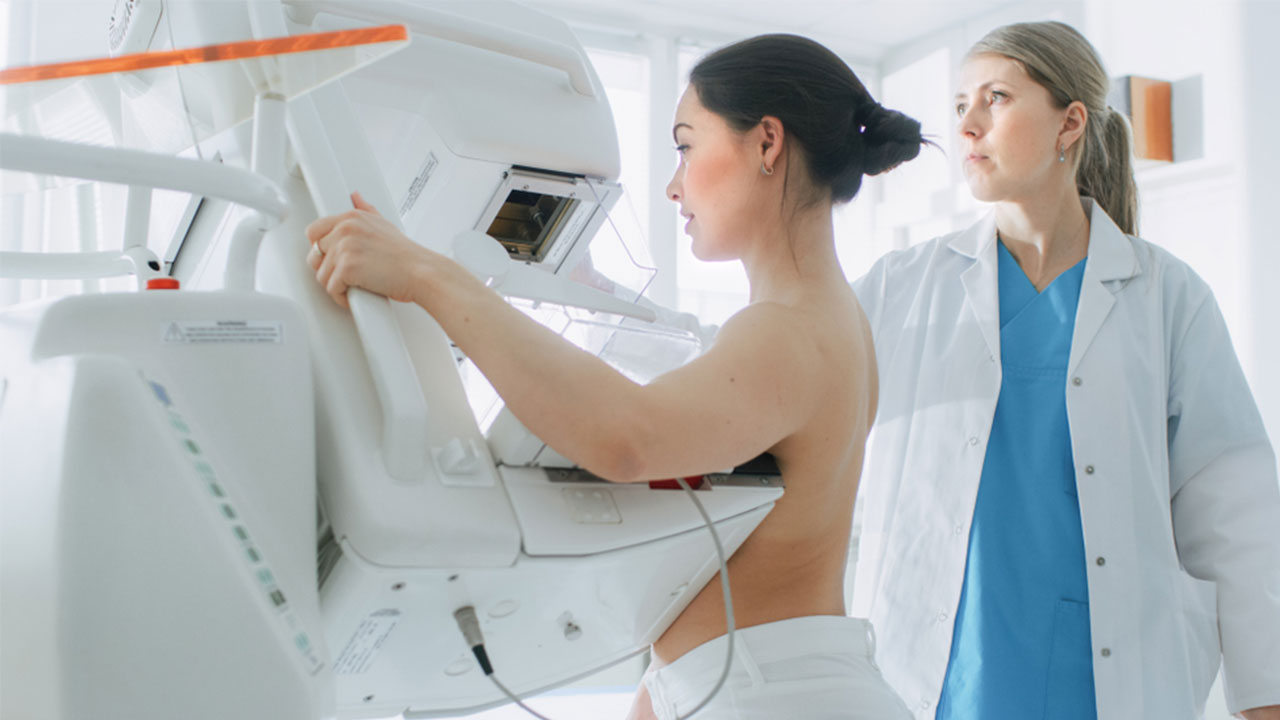What Is Breast Thermography?
 By: by Amino Science
By: by Amino Science

Thermography is a test that uses thermal imaging to detect changes in the body’s temperature. It looks specifically at how heat is distributed throughout the body. It can be used for detecting tissue changes and cancerous tumors.
What is breast thermography? Breast thermography is when this type of infrared imaging is used to detect changes in temperature in breast tissue that may indicate precancerous or cancerous cells are present, and it's thought to be more effective than mammograms at early detection of breast cancer.
Although less common than mammograms, digital infrared thermal imaging (DITI) has been around just as long. It was approved by the FDA in 1982 as an additional screening tool for breast cancer to be used in conjunction with other screening tests such as mammogram and ultrasound. While the FDA does not recommend the use of thermography as a replacement for an annual mammogram, it is important for women to be informed about all their options when it comes to breast cancer screening tools.

How Breast Thermography Works
Infrared breast imaging works differently than traditional breast cancer screenings such as mammograms or physical exams. Both mammograms and physical examinations are looking for suspicious lumps large enough to be seen or felt, like a tumor that has already developed. With breast thermography, cancerous conditions in the breast may sometimes be detected at the early stage before an actual tumor has formed. Or sometimes tumors may be detected when they are still too small to be found on traditional mammograms.
A breast thermography screening takes about 30 minutes. Using sophisticated infrared cameras, the thermogram infrared images will then show the heat differences between normal, healthy breast tissue and breast tissue that is either precancerous or cancerous. It will also detect changes in tissue surrounding precancerous or cancerous tissue.
Cancerous tumors increase blood flow so they can get more nutrients. This process opens existing blood vessels and creates new ones, which raises the surface temperature of breasts. The change in breast skin temperature helps doctors detect and investigate areas of concern in the breast. This makes breast thermography a great addition to an annual breast cancer screening routine. Women’s health expert Dr. Christiane Northrup and the Breast Thermography website recommend breast thermography for the following reasons.
Thermography vs. Mammogram
Why would a woman choose thermography for breast cancer detection? While mammograms have become the standard breast cancer screening tool for decades, they are not perfect. In fact, according to the Susan G. Komen Foundation, mammograms miss about 13% of breast cancers. This is often due to conditions like dense breast tissue that make it difficult to spot cancer on a mammogram, which is why it is so important that women be informed of their risk factors for breast cancer and be aware of additional screening options available.
Below is a side-by-side comparison to summarize the differences between breast thermography and mammogram, as well as the benefits of breast thermography when added to an annual breast cancer screening routine.

According to Dr. Christiane Northrup, starting with a baseline breast thermography is a great way to identify women who are at a higher risk of developing breast cancer, as women with abnormal breast thermography results have been shown to have a greater propensity for breast cancer. Once women know they are considered at a higher cancer risk, they can be proactive in taking preventative steps such as future breast thermography tests or ultrasounds to watch for any changes in their breast tissue.
How Much Does Breast Thermography Cost?
So if breast thermography is such a great breast cancer screening tool, why is it not recommended more often? One of the big reasons is that most insurance companies do not cover or reimburse breast thermography tests at this time, and it is not covered by Medicare.
Mammograms, on the other hand, are covered by Medicare, and the Affordable Care Act requires insurance companies to cover an annual mammogram starting at age 40.
Even though they are not usually covered by insurance, most breast thermography tests are affordable, starting at around two hundred dollars. But with mammograms being covered by health care providers, being more common and familiar, and being more readily available, they remain the go-to for breast cancer screening tests.
The second reason is that breast thermography as a diagnostic tool for breast cancer has a high false-positive rate, which means that cancer cells are sometime detected when they aren't in fact there.
Where to Get Breast Thermography
Breastthermography.com has provided an international list of thermography centers, including several locations throughout the United States. If none of the locations listed are a convenient option, try requesting a referral from a primary care physician or OB-GYN. Another option is to search for a local radiology or imaging facility that may offer thermography.
While thermography is not an approved substitute for an annual mammogram, it is important for women to know their options for additional breast cancer screenings. This is especially true for women with dense breast tissue who are more likely to receive false negative results on a mammogram. Thermography may also help establish a baseline for women in regards to their breast health and help identify women who are at high risk of developing breast cancer so they may take a proactive role in regards to their breast health.
If you are looking to support overall health, explore how Amino Co products can help.

Up to 25% off Amino
Shop NowTAGS: conditions natural cures
Join the Community
Comments (0)
Most Craveable Recipes




 833-264-6620
833-264-6620



















